We remain committed to providing All-inclusive China tour with Yangtze River Cruise. You neither need to worry about which attraction you will be heading to nor need to decide which local dish you will be eating. Your experienced guide will help you book the hotels, the trains and the tickets in advance. Little money will you need to pay once you choose us. We will make sure that every pound you spend here is worth it. The mouth-watering Beijing Duck will be included in your Beijing All-inclusive China tour. The Tang Dynasty Singing and Dancing Show with Dumplings Dinner will also be included in your Xi'an All-inclusive China tour. No additional money will be charged for your visit to Shufeng Yayun Sichuan Opera Theater in your Chengdu All-inclusive China tour. If you are interested, you are just one click away from your All-inclusive China tour with Yangtze River Cruise.

Upon arrival, you will find your guide holding a welcome board with your name written on it. After greeting you with a warm hug, your guide will escort you to the hotel. Your guide will help you check in and then you can search for some information about Beijing for the rest of your free time. Located in the northern part of China, Beijing is one of the most populous capitals in the world. For all its limited size of 16,410.5 square kilometers, Beijing has a huge population of some 21,000,000 residents, about 1/3 of the British population. As one of the most visited cities in China, Beijing also has a lot of food choices to offer, such as Tanghulu, Zhajiangmian, and Mongolian hotpot. Notably, Zhajiangmian is a traditional Beijing dish composed of thick wheat noodles smothered with special fried sauce, whose main ingredients are pork, fermented soybean paste, and some other vegetables. Before enjoying the Zhajiangmian, you are suggested to stir it with your chopsticks so that the noodle and the sauce are fully mixed.
After breakfast, you will head to Tian’anmen Square, one of the world’s largest public squares. With a length of 880 meters and a width of 500 meters, Tian’anmen Square covers a total area of 440,000 square meters, roughly the size of the Vatican. On the center of Tian’anmen Square erects the Monument to the People’s Heroes, which was built to commemorate those who lost their lives in Liberation War and People’s Revolutions. On its facade is an inscription, which is in Mao Zedong’s (the first leader of the New China) handwriting, reading “Eternal glory to the people's heroes!”. There are eight pictures in relief on the 37.94-meter-tall marble monument, indicating respectively 8 stories during the Chinese people’s struggle for a new China. One of them tells us about how Ling Zhexu, a high-level official of the Qing Dynasty (1636-1912), destroyed more than 1,000 tons of opium that had poisoned countless Chinese people.
Then you will explore the Forbidden City (closed each Monday), a huge imperial palace that has served more than 24 emperors of the Ming (1368-1644) and Qing (1636-1912) Dynasties. Completed in 1420 by Yongle Emperor (the third emperor of the Ming Dynasty), the Forbidden City covers a total area of some 72 square kilometers, approximately 16 times the size of the Vatican. When you take a walk around the outer court of the Forbidden City, a question like this may pop into your mind: why is there no plantation at all? Actually, it can be explained from two perspectives. For one thing, as the outer court of the Forbidden City was frequently visited by the Emperor, trees would provide perfect ambush points for assassins. For another, a lack of vegetation could amplify the “supreme godly power” of the Emperor when grand ceremonies were held at the outer court. The presence of trees would make the outer court appear smaller, thus overshadowing the majestic and solemn atmosphere.
After lunch, you will pay a visit to the Temple of Heaven, a magnificent imperial temple located in the southeastern part of central Beijing. Completed during the reign of the Yongle Emperor, the third emperor of the Ming Dynasty (1368-1644), the Temple of Heaven was visited by the Emperor three times a year to worship heaven and pray for bumper harvests. According to the feudal rules, the Emperor is the only one with the authority to hold prayer ceremonies in this very temple. However, there is an exception. The year 1912 marked the demise of the Qing Dynasty (1636-1912) and the rise of the Republic of China (1912-1949). At that shifting juncture, Yuan Shikai, the then most influential warlord, conducted a Ming prayer ceremony in an attempt to proclaim himself emperor. To his surprise, his attempt was greeted with a national outcry, consigning the whole country to chaos and revolts. With his prestige irreparably damaged and his power irreversibly waning, Yuan passed away due to declined health conditions 83 days after his visit to the Temple of Heaven.
Next, you will make your way to Summer Palace, a picturesque imperial garden situated in the western suburban area of Beijing, with 3/4 of its area composed of waters. Covering some 3 square kilometers, the largest imperial garden was built after the West Lake in Hangzhou (the capital city of Zhejiang Province in southeastern China). Beside the Kunming Lake stands a building called the Hall of Jade Ripples, in which Guangxu Emperor, the last but one emperor of the Qing Dynasty (1636-1912), was confined by his aunt Empress Dowager Cixi in a coup. Here you can still find the traces of multiple layers of walls that secluded Guangxu Emperor from the outside. The small pits on the floor are allegedly ascribed to Guangxu Emperor, who used his cane to poke the floor in ways that vented his spleen. After 10 years of confinement, the poor Guangxu Emperor ended up dying for unknown reasons
After your visit to Summer Palace, your guide will take you to dinner, which will be Peking Roast Duck. As a popular Beijing local dish, Peking Roast Duck distinguishes itself by its thin, crisp skin, special sweet bean sauce, and creative way of eating. The authentic way of eating Peking Roast Duck is to put some sliced meat, spring onion, cucumber, and sweet bean sauce together on a pancake, and then roll the pancake around all these fillings before you eat it. You will surely be amazed by its taste. Since you are on our Beijing All-Inclusive Tour, your Peking Roast Duck dinner will be included.
After that, you will be transferred back to your hotel.


After breakfast, your guide will drive you to Ming Tombs, about 50 kilometers northwest of the Beijing city area. It is estimated that you will spend about an hour in the car. During this interval, you are welcome to ask whatever you want to know about this attraction. Situated in a basin and surround by mountains on three sides, Ming Tombs are a collection of mausoleums where 13 emperors, 23 empresses, 2 princes, over 30 concubines as well as 2 eunuchs were buried. As the tomb of Wanli Emperor, the thirteenth emperor of the Ming Dynasty (1368-1644), Ding Tomb is the only one that has been excavated. A treasure of cultural relics was excavated from the 1000-square-meter underground palace. An invaluable one of them is the Gold Crown of Emperor Wanli, which was weaved with 518 gold thin threads, weighing 826 grams. Like the wings of a cicada, every hole of the mesh on the crown is of the same size.
u will head to Badaling Great Wall, which is roughly 38 kilometers northwest of Ming Tombs. It will take you about 40 minutes to get there. The Great Wall was first built in the Qin Dynasty (221 BC-201 BC), when Qin Shihuang (the first emperor of a unified China) ordered the construction of an enormous defensive wall to ward off nomadic invasions from the north. What you will see in Badaling Great Wall was built in the Ming Dynasty (1368-1644). Can you imagine that sticky rice was used as one of the construction ingredients of the Great Wall built in the Ming Dynasty? It is found that a large amount of sticky rice was requisitioned from the public as one important ingredient of the mortar, which helped the Ming great wall weather earthquakes and other disasters.
After your visit, you will be escorted to your hotel, where you will enjoy your dinner and spend some private hours.


 Xian
Xian You will explore Hutongs after having your breakfast. Hutong is a type of narrow valley lined with siheyuan (a kind of traditional courtyard residence), frequently seen in Beijing. When you take a walk in a Hutong, you can learn what life in old Beijing was like. If you are not a local, you will be very likely to lose your bearings in this kind of maze-like valley. As a result, a good way to explore hutong is to take a rickshaw, through which you will have a general knowledge about the old Beijing life. You will also have the opportunity to visit one of the siheyuans in the hutong and see its inside in detail. Siheyuan consists of one courtyard and several rooms on four sides. The courtyard is the place for recreational and daily activities while other rooms may function as bedrooms, kitchens, studies, etc.
After lunch, your guide will help you check out and drive you to the train station, where you will take the estimated train G57 14:00/18:24 to Xi’an, a city steeped in history. Upon arrival, your Xi’an guide will be waiting for you at the train station and take you to dinner. Afterward, you will be escorted to your hotel and have a good rest.

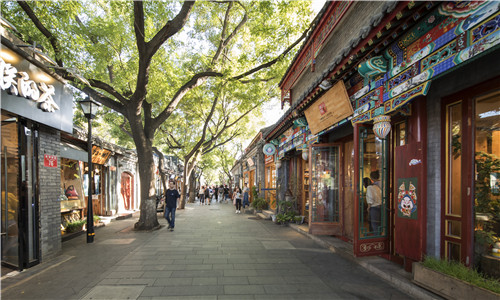
After breakfast, you will pay a visit to Terra Cotta Warriors and Horses Museum, in which more than 8,000 terra cotta warriors are “at rest”. The detailed life-size statues were the substitutes of Qin Shihuang’s (the first emperor of a unified China) best soldiers, serving as his guards after his death. If you are observant, you will find that every one of these terra cotta warriors, though different in face, hairstyle, and even facial expression, all have single eyelids. Does it mean that people in the Qin Dynasty (221 BC-201 BC) were all single-eyelid? Absolutely not. In fact, in the process of making terra cotta warriors, the part of the eyelid was painted with pigments. After more than 2,000 years, the fading of the pigments is unavoidable. Small wonder that Wanli Emperor would take this crown to his afterlife.
After lunch, you make your way to Big Wild Goose Pagoda a 7-level pagoda with a height of 64 meters. Completed in 652 during the Tang Dynasty (618-907), Big Wild Goose Pagoda was built to collect the Buddhist scriptures that Xuan Zang (a Chinese Buddhist master) brought from India after 17 years of a hard journey. Due to the impacts from more than 70 earthquakes and loss of underground water, Big Wild Goose Pagoda started to lean each year since the Qing Dynasty. If you take a careful look at the pagoda, you will find it tilt to the northwest by 1,010.5 mm. Fortunately, after the implementation of some measures, such as foundation consolidation and underground water compensation, the incline starts to return 1 mm per year. It will take about 1,000 years before it goes back to normal.
This night you will watch a Tang Dynasty Singing and Dancing Show with Dumplings Dinner. When you watch the remarkable show, you will also enjoy Chinese dumplings, an ancient Chinese dish with a history of more than 1,800 years. Also dubbed Jiaozi, Chinese dumplings are composed of meat or vegetable filling wrapped into a thin piece of dough. When eaten together with a special sauce dip, you will surely rave about it. This special dinner will be included in your China All-Inclusive tour.
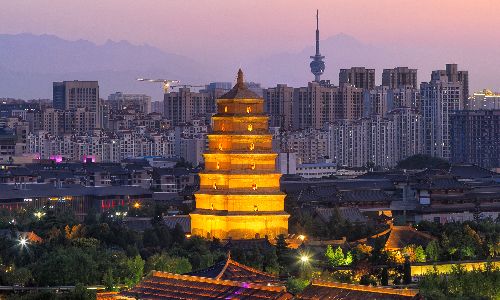
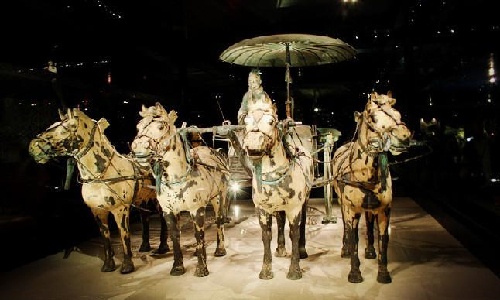
 Chengdu
Chengdu After breakfast, you will go to the last stop in Xi’an, the old City Wall, one of the best-preserved ancient city walls in China. Enclosing some 14 square kilometers, about the size of 1750 football fields, Xi’an old City Wall was built in the Ming Dynasty (1368-1644) based on the city wall of the Tang (618-907) imperial city. When you take a walk on the city wall, you will find that the southwestern corner of it is round while the rest of its corners are angled. That is because the southwestern part of the city wall was once part of the Tang imperial city wall, which is featured by round corners.
After completing your visit, you will be transferred to the airport and take the estimated flight CZ6249 16:55/18:35 to Chengdu, the capital of Sichuan Province in southwestern China. Upon arrival, your guide will be waiting for you. Your guide will take you to dinner first and then drive you to the hotel, where you are suggested to have a good rest.
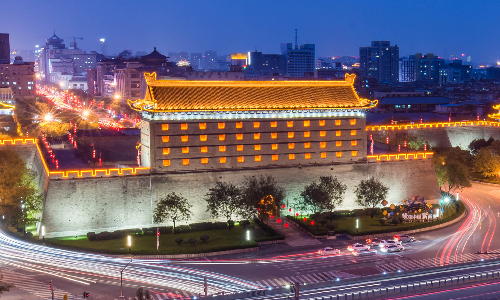

After breakfast, you will visit Chengdu Research Base of Giant Panda Breeding, where you will see cute pandas, a kind of bear unique to China. Having been living on this planet for more than 8 million years, the panda is featured by its black-and-white fur, particularly its black fur around its eyes, looking like shadows under the eyes. A panda, whose favorite food is bamboo, spends more than 14 hours daily eating. And an adult panda can consume some 40 kilograms of food per day. In this base, milk, eggs, fresh fruits, and bamboo are rationed daily to prevent the lovely pandas from diseases.
After lunch, you will head to Jinli Street, an ancient street that can be traced back to the Qin Dynasty (221 BC-201 BC). Now it has become a perfect place for visitors to experience authentic western Sichuan folklife. On this 550-meter-long street, you can experience assorted folk-custom activities, such as traditional magic, straw sandal making, and sugar painting. When you do a sugar painting, you should make a painting on a clean slab with a spoon filled with melted sugar. A sugar painting must be finished before the melted sugar gets cold and become solid. When it is finished, you should scrape your sugar painting off the slab and it is ready to eat.
Then you will visit the Wuhou Shrine Museum, which was built in 221 to honor Zhuge Liang, chancellor of the State of Shu Han (221-263). Covering more than 150,000 square meters, Wuhou Shrine boasts a number of cultural relics. Inside the Wuhou Shrine Museum erects a stele built by an official of the Ming Dynasty (1368-1644). Under the stele, there is a statue of Bixi, which is one of the 9 sons of the Dragon King in Chinese mythology. It is believed one may lead a successful life after touching the head of the tortoise-shaped monster. Therefore, Bixi is frequently seen in traditional Chinese architecture.
After your visit to Wuhou Shrine Museum, you will take a walk in the People’s Park, which covers more than 110,000 square meters, about the size of 10 football fields. There is an air-raid shelter, which was built in the 1970s, in this favorite haunt of Chengdu citizens in summer.
The 1000-square-meter air-raid shelter is composed of 5 inter-connected spaces, with each one of them equipped with televisions, tables, and chairs. In the scorching summer, hordes of people come here to avoid heat as the temperature inside is only 26℃, equivalent to the temperature of an air-conditioned room.
After dinner, your guide will take you to Shufeng Yayun Sichuan Opera Theater, where you will enjoy Sichuan Opera performances. This part is also included in your China All-Inclusive tour.
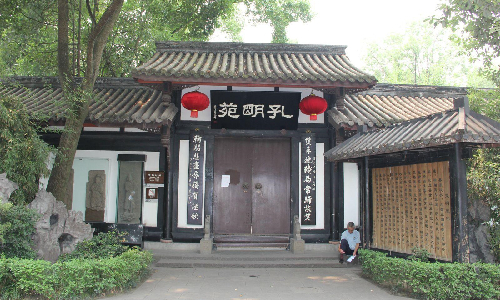
 Chongqing
Chongqing After breakfast, you will explore Kuan Zhai Alley, an interesting historical and cultural Street consisting of three valleys, which are Kuan (Wide) Alley, Zhai (Narrow) Alley, and Jing Alley. As a lot of rich persons used to live in the Kuan Valley, the road was built with a width of 8 meters for the passage of their carriages. While Zhai Alley, where used to be the community of foreign merchants, was rebuilt in the western style. There is also a special service available in the Kuan Zhai Alley, ear cleaning. You can just lie on a deck chair at ease, having your ears cleaned by the earwax cleaner.
After lunch, your guide will drive you to the train station, where you will take the estimated train G8623 14:41/16:00 to Chongqing. Upon arrival, your guide will pick you up and drive you to the port. Then you will board the Yangtze River Cruise.


In the morning, if weather permitting, you can participate the Taiji morning exercise program. A well-trained Taiji master will teach you how to play Taiji.
After breakfast, you will explore Shibaozhai Pagoda. Situated on the north riverbank of the Yangtze River, the 12-level wooden pagoda was built against a 200-meter-tall rock, which is believed to be left by Goddess Nvwa who patched up the broken sky with five-color stones. Shibaozhai Pagoda was built by local people during the Qing Dynasty (1636-1912), and it is said that not a single nail was used in its construction.
of the King of the Netherworld. Here you will see what is the netherworld like in Chinese people’s minds. Traditional Chinese people believe, if you are a nice person, you can get reincarnation successfully in the netherworld. On the contrary, the evil people will get tormented here. This is the traditional Chinese concept of praising virtue and punishing vice.
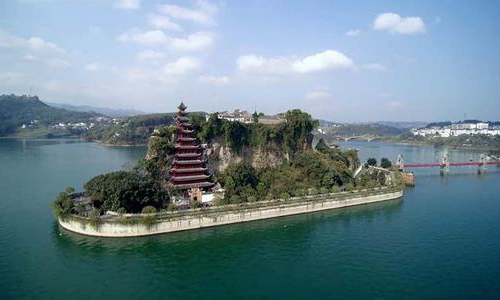
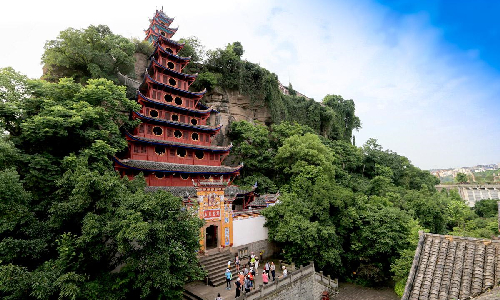
After breakfast, you will pass through Qutang Gorge, stretching from Baidi Mountain in the west to Daxi County in the east. Qutang Gorge is the most breathtaking one of the Three Gorges, with the narrowest part of it measuring less than 50 meters. On both sides of the gorge, you will see ancient plank road on the maintains, looking like zippers on the green trousers. There are also a number of caves on the face of the cliffs, in which cultural relics and traces of its ancient residents may be found. When you pass through Kuimen, you will find many other visitors taking out a ten-yuan note with one hand, hold a camera with the other. The beautiful picture on the back of the note is the same as what you can see now.
Then you will pass through Wu Gorge, the most impressive one of the Three Gorges. Wu Gorge is frequently discussed for its twelve peaks, and Jixian Peak is a typical one of them. Located on the north bank of the Wu Gorge, Jixian Peak, also dubbed Scissors Peak, is 840 meters above sea level. “Juxian” means a gathering of divines. On the top of the Jixian Peak erects a bush of stone peaks, which looks like a group of divines gathering together for a party, hence the name. Notably, from a particular angle, two stone peaks on its top looks like two blades of a pair of scissors. That is how it gets its nickname, Scissors Peak.
Next, you will pass through the last one of the Three Gorges, Xiling Gorge, which is also the longest one of the Three Gorges, boasting a length of 76 kilometers. Xiling Gorge is well-known for multiple smaller gorges inside, and an impressive one of them is Huangniu Gorge. Huangniu Gorge will leave you an unforgettable impression with its rushing waves and lurking rocks under the water. Huangniu Gorge is also surrounded by towering mountains and steep cliffs. In addition, Fossils of fish, trilobites, and other ocean creatures can also be found in this splendid gorge.
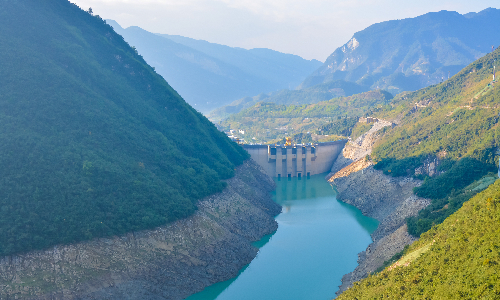

 Shanghai
Shanghai After breakfast, you will have a shore excursion to Three Gorges Dam, the largest dam throughout Chinese history and also the largest power station in the world. With a length of 3,335 meters and a height of 185 meters, the Three Gorges Dam can generate annual electricity of 100 billion kWh, making a great contribution to the supply of electricity to the whole country. In addition, the Three Gorges Dam also plays an increasing role in the prevention and control of floods. Since its completion, it has put under control 5 huge floods, having stopped about 14 billion cubic meters of water.
After your visit, your guide will pick you up at the tourist center and send you to the train station, where will take the estimated train D354 14:46/22:21 to Shanghai. Your Shanghai guide will be waiting for you. After giving you a warm welcome, your guide will escort you to the hotel.
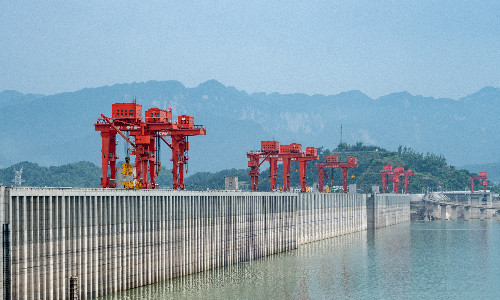
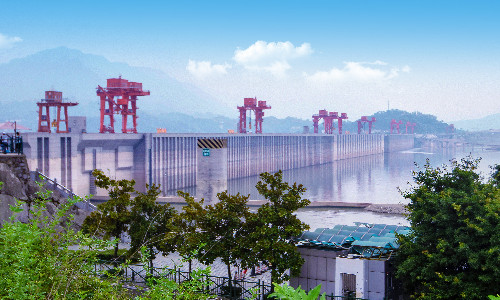
After breakfast, you will explore Yu Garden (closed each Monday), a must-go destination in your Shanghai All-Inclusive Tour. In 1559, a high-ranking official of the Ming Dynasty (1368-1644) funded the construction of this beautiful garden as a retirement gift to his parents. At Yu Garden, you will see a couple of iron lion statues, which were built in the Yuan Dynasty (1271-1368) and were initially placed in the Anyang County Office of Henan Province (central China). The lion on the left, with his left foot on a ball, symbolizes power and solemnity. While the lioness, with her foot on her cub, embodies adequate offspring.
Then you will visit Jing’an Temple, the largest Buddhist temple in Shanghai. Located in Jing’an District, Jing’an Temple covers a total area of over 22,000 square kilometers, about the size of three football fields. On the second floor of the bell tower in the Jing’an Temple, you can find an old well named Yong Spring, meaning “a spring with its water gushing out” in the Chinese language. And the water that gushed out of the spring was warm, thus looking like boiling water that keeps running out.
After lunch, you will pay a visit to Shanghai Tower, which looks like a Chinese dragon poised to spiral its way up to the sky when observed from outside. When you get there, your guide will lead you to take the fastest elevator in the world to the 118th floor, where the observatory is located. It will only take you about 1 minute to move from the 1st floor to the 118th floor. On the 118th floor, you can have a panoramic view of the entire city. The expense of the Shanghai Tower will be included in your Shanghai All-Inclusive Tour.
Then you will head to Nanjing Road, a commercial street extending 5.5 kilometers. As the favorite haunt of those loving shopping, Nanjing Road accommodates shops selling a wide collection of things, ranging from desserts to scissors. Here, you can also find some time-honored shops, whose commodities can stand the test of generations of Shanghai locals. A typical one of them is Zhang Xiaoquan, a time-honored scissors shop that can be dated back to the Ming Dynasty (1368-1644). The famous brand sells the most durable and the sharpest scissors to people around the world, winning unanimous praises globally.
The last stop of your China All Inclusive Tour will be the Bund, which is located near the confluence of the Suzhou River and the Huangpu River. As the waterfront area of Shanghai, the Bund stretches more than 1.5 kilometers. At the Bund, you can enjoy the gentle touches of the wind and take a walk around the Huangpu River. Here, you can also take some pictures of the world-famous exotic building clusters, including Shanghai club, Asia Building, and HSBC (The Hong Kong and Shanghai Banking Corporation Limited) Building. If you post these pictures on your Facebook, you will surely get a lot of thumbs-up from your friends and families.
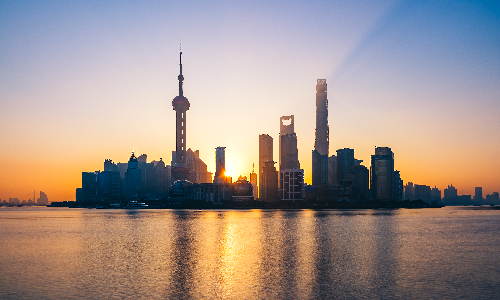

After breakfast, your guide will help you check out and escort you to the airport. You will take the flight home with an unforgettable memory of the beautiful China.
Author: Zhou Yuxin
| City | Five Star hotel list | Four Star hotel list |
|---|---|---|
| Beijing | Sunworld Dynasty Hotel Beijing Wangfujing | Sunworld Hotel Wangfujing |
| Xi'an | Tianyu Gloria Grand Hotel Xi'an | Sunworld Dynasty Hotel |
| Yangtze River Cruise | Victoria Anna | Victoria Anna |
| Shanghai | Ocean Hotel Shanghai | Courtyard by Marriott Shanghai Central |
 |
![]() About your child or infant, please contact us for a discounted price.
About your child or infant, please contact us for a discounted price.



We started with a few days in Beijing & ended in Shanghai, from where we visited the Forbidden City and Great Wall. In between we visited Terra Cotta Warriors Museum, Panda Base, Shanghai Disneyland.

We had a wonderful holiday in China which will remain long in the memory. China is a breathtakingly beautiful country full of splendid temples and palaces, mountains and rivers, peaceful rural scenes and bustling shopping streets.
 QUICK ENQUIRY
QUICK ENQUIRY